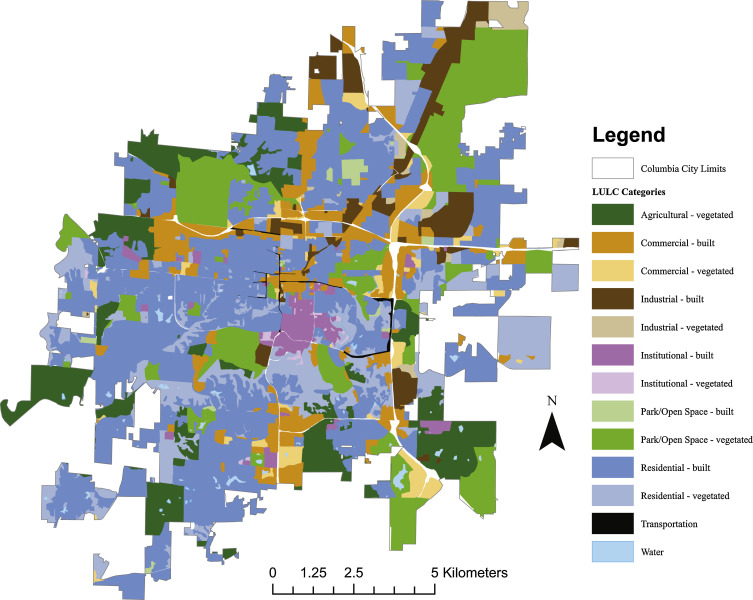Nature/Society Relationships
A longstanding strength of Geography is its aim to understand the linkages between human society and the natural environment. MU Geographers are conducting research on how people understand, conceptualize and utilize their environments, addressing the political, social, philosophical, economic and natural implications of environmental development and change, within the United States and internationally.
Readings
T. C. Matisziw, C.H. Nilon, S.A. Wilhelm Stanis, J.W. LeMaster, J.A. McElroy, and S.P. Sayers. (2016) The right space at the right time: The relationship between children’s physical activity and land use/land cover. Landscape and Urban Planning, 151, 21–32.
J. Hobbs, G.L. Andersen, K. Krzywinski, M. Talib, A. Ebaid, and R.H. Pierce. (2014) Traditional Nomadic Tending of Trees in the Arid Cultural Landscape of the Red Sea Hills in Sudan and Egypt. Journal of Arid Environments 106:36-44.
J. Hobbs, G.L. Andersen, K, Krzywinski, M. Talib, A. Ebaid, and R.H. Pierce. (2014) Acacia Trees on the Cultural Landscapes of the Red Sea Hills. Biodiversity and Conservation 23: 2923-2943.
M. Palmer, and S. Kraushaar. (2013) Volunteered Geographic Information, Actor Network Theory, and Severe Storm Reports. In D. Sui, S. Elwood, and M. Goodchild (Ed.), Crowdsourcing Geographic Knowledge (Dordrecht, NLD: Springer Publishing), pp. 287-306.
S.C. Larsen and C.N. Hutton. (2012) Community discourse and the emerging amenity landscapes of the rural American West. GeoJournal 77 (5): 651-665
S.C. Larsen, M. Foulkes, C. Sorenson, A. Thompson (2010) Environmental learning and the social construction of an exurban landscape in Fremont County, Colorado. Geoforum 42(1): 83-93.
M.H. Palmer (2009) Engaging with indigital geographic information networks. Futures 41: 33-40.
M.H. Palmer et al. (2009) Xoa:dau to Maunkaui: Integrating Indigenous Knowledge into an Undergraduate Earth Systems Science Course. Journal of Geoscience Education 57: 137-144
S.C. Larsen (2008). Traditional knowledge regarding water among the Cheslatta-Carrier Nation in British Columbia: Change and continuity in the use and valuation of a contested resource. La Gestion Intégrée de l’Eau dans l’Histoire Environmentale: Savoirs Traditionnels et Pratiques Modernes [Integrated Water Management in Environmental History: Traditional Knowledge and Modern Practices], ed. Ella Hermon. Québec: Université de Laval.
S.C. Larsen, C. Sorenson, D. McDermott, J. Long, and C. Post (2007). Place perception and social interaction on an exurban landscape in central Colorado. The Professional Geographer. 59(4): 421-433.
J.J. Hobbs. 2004. Problems in the Harvest of Edible Birds’ Nests in Sarawak and Sabah, Malaysian Borneo. Biodiversity and Conservation 13: 2209-2226.
A. Chin, L.R. Laurencio, M.D. Daniels, E. Wohl, M.A. Urban, K. Boyer, A. Butt, H. Piegay, K.J. Gregory. (2012) The Significance of perceptions and feedbacks effectively managing wood in rivers. River Research and Applications. DOI: 10.1002/rra.2617.
A. Chin. M.D. Daniels, M.A. Urban, et al. (2008) Perceptions of wood in rivers and challenges for stream restoration in the United States. Environmental Management 41(6): 893-903.
M.A. Urban (2005) Values and ethical beliefs regarding agricultural drainage in Central Illinois. Society and Natural Resources 18: 1-17.
J.J. Hobbs (2005) Guidelines for the Involvement of Pastoral Nomads in Conservation and Development Efforts. In Dawn Chatty, ed. Nomadic Societies in the Middle East and North Africa: Entering the 21st Century. Leiden: E.J. Brill, pp. 785-201.
E.W. Wilson (2003) Politics and the Land Ethic: A case study of the elk reintroduction in Missouri. Masters Thesis, University of Missouri.
S.C. Larsen (2003) Promoting aboriginal territoriality through interethnic alliances. Human Organization 62: 74 – 84.
B.L. Rhoads, D. Wilson, M.A. Urban, and E. E. Herricks (1999) Interaction between scientists and nonscientists in community-based watershed management: Emergence of the concept of stream naturalization. Environmental Management. 24: 297-308.
S.C. Larsen (1999) The Cheslatta redevelopment project: economic development and the cultural landscape of the Cheslatta T’en. Research in Economic Anthropology 20: 49 – 78.
M.A. Urban, (2013) Philosophy and Theory in Geomorphology, in Treatise on Geomorphology - Volume 1, ed. Sack, D. 124-129. New York: Elsevier.
M.A. Urban, and B.L. Rhoads. (2003) Conceptions of Nature: Implications for an Integrated Geography, in Contemporary Meanings in Physical Geography: From What to Why?, ed. S.T. Trudgill and A. Roy. 211-231. London: Edward Arnold.
C.M. Cowell and A.J. Parker. (2004) Biogeography in the Annals. Annals of the Association of American Geographers 94: 256-268.
C.M. Cowell. (2003) Geographic Isolation: Origins of the Guns, Germs and Steel model. Antipode 35: 808-813.
M.A. Urban. (2002) Conceptualizing anthropogenic change in fluvial systems: Drainage development on the Upper Embarras River, Illinois. The Professional Geographer 54: 204-217.
M.A. Urban. (2006) Open Space, in The Encyclopedia of Human Geography, ed. Barney Warf. 342-343. London: Sage

